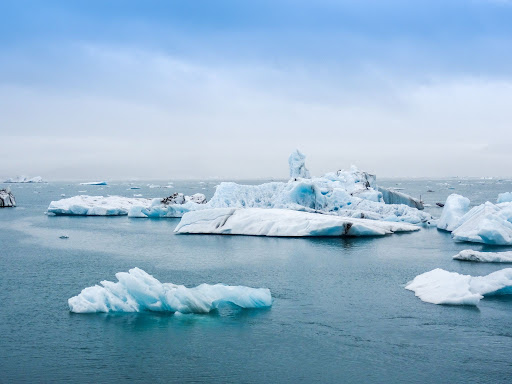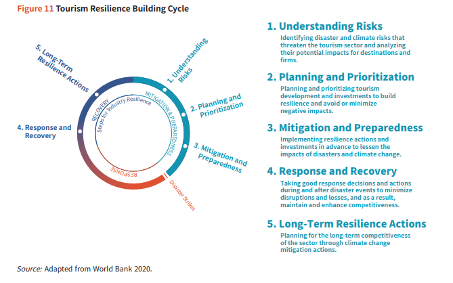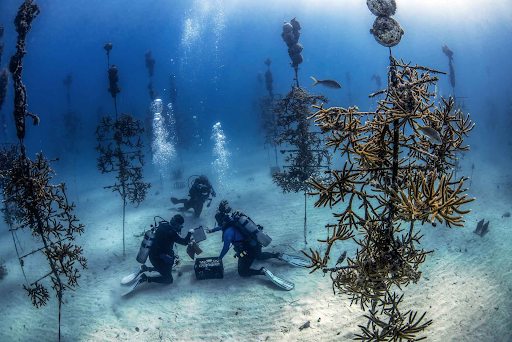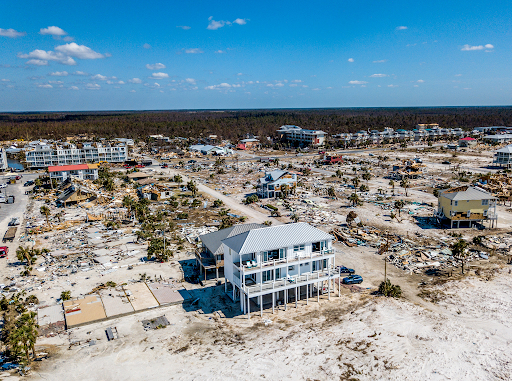Last year, Solimar International’s Director of Conservation & Community Development, Chloe King, conducted a first-of-its-kind study of 30 tourism operators around the world. These tourism businesses—ranging from Destination Management Organizations to community-based homestay networks to high-end eco-lodges—were assessed via in-depth interviews and surveys to understand how centering nature within their business models enabled them to shift from “sustainable” to “regenerative” tourism practices. Led alongside researchers at the University of Edinburgh in the United Kingdom, this study did not seek to define what regenerative tourism is, but rather how tourism can be more regenerative by embracing nature as the solution. While “regenerative tourism” seems to be the latest buzzword in the industry, this study sought to ground our aspirations as an industry with practical examples from around the world.
Realigning Our Values with People and Nature
In 2022, our society—and the tourism industry embedded within it—is at a crossroads. The COVID-19 pandemic, once expected to bring about a sweeping “green” transformation of our economy, has failed to catalyze this transition, while further deepening inequality across the globe. As vaccine access remains unevenly distributed across the world, travelers from the Global North feel secure in their ability to travel to the Global South for a vacation, assured in the fact that their visits bring economic opportunities to those who may otherwise lack them. Meanwhile, carbon dioxide emissions worldwide—following a temporary steep drop in 2020—have rebounded, alongside the tourism industry that contributes an estimated 8% of global emissions each year.
Tourism is both a place-based and global industry: it has hyper-local impacts (providing job opportunities to local people) with global ramifications (contributing to climate breakdown that limits the ability of the same communities to adapt and secure a just future). In a stark illustration of this juxtaposition, a recent study found that each Antarctic tourist effectively responsible for melting 83 tonnes of snow. For too long, we have justified these impacts through the economic benefits that the tourism industry brings, once responsible for employing 1 in 10 people globally.
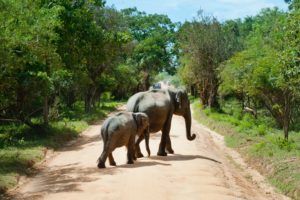
Tourism must begin to fundamentally realign itself with the people and nature it claims to serve, to both rectify the impact it has on our global climate while driving more than just economic gains in the destinations in which it operates. Tourism is more than just money: it can be an opportunity to protect nature and demonstrate its intrinsic value; it can bring people together towards a common vision, such as through the establishment of a DMO; it can build social bonds, bridge cultures, and raise awareness; and it can bring greater agency to local communities, to bring the life they aspire for into existence.
Regenerative tourism has the potential to transform how we value the act of tourism in itself, beginning a shift from a “visitor economy” to a “resident economy”, where the needs and values of local people are placed above that of temporary visitors. Regenerative tourism seeks to place greater value on nature and human well-being than growth and profit through a whole-of-the-system, place-based, community-led, and environment-centered approach. These regenerative practices can also help to reconcile tourism’s impact on climate with its positive impact on place, by both increasing industry responsibility for reducing emissions while helping communities adapt to climate change impacts that are already underway.
The research we conducted, through in-depth interviews with 30 tourism operators around the globe, shows how this shift is possible.
Embracing Nature in the Regenerative Shift
A regenerative shift across all sectors of our modern economy—from construction to agriculture to transport—will be essential to addressing both climate breakdown and the destruction of wildlife across the globe. This past decade saw the hottest temperatures on record as more species of plants and animals were threatened with extinction than any other time in human history. The research is clear that from ocean to alpine forest—our global ecosystems that collectively absorb 56% of all human emissions each year—we cannot address climate change without protecting and restoring nature.
Nature-based solutions—defined as actions that protect, sustainably manage, or restore ecosystems to provide both biodiversity and human well-being benefits—will contribute a significant portion of total emission mitigation needed over the coming years (estimated at 5 to 11.7 GtCO2e per year by 2030). This must happen alongside deep and far-reaching decarbonization of industries like tourism. But the nature-based solutions utilized by the tourism industry do so much more than just absorb emissions from the atmosphere: they can help communities adapt to climate change, like mangrove forests protecting against storm surges; they can diversify business revenue and enhance destination resilience against crises like COVID-19; and they can protect the intrinsic or cultural values of nature that go beyond attempts at economic valuation, such as the traditional significance of a forest or the beauty of whale song.
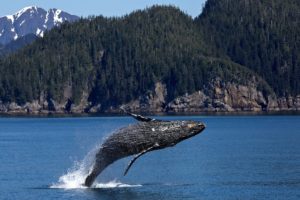
By embracing nature in the regenerative shift, tourism can begin to center local communities and ecosystems in its response to global challenges like climate change. This will require deep and far-ranging discussions with local stakeholders to engage in conversation around what to protect, restore, and let go of as they strive towards a common and just future. Whether using tourism revenue to restore 200,000 hectares of once pristine wilderness or using tourists themselves as citizen scientists to monitor a small path of coral reef near a resort, centering nature will be key to the regenerative shift in actively improving destinations, rather than just sustaining them.
As the economist and Harvard University professor David Korten wrote:
“The only valid purpose of an economy is to serve life. To align the human economy with this purpose, we must learn to live as nature lives, organize as nature organizes, and learn as nature learns guided by reality-based, life-centered, intellectually-sound economics.”
Regenerative Tourism: Seeking Net Positive Impact on Destinations
By quantifying tourism only through its economic impact, we obscure other aspects that money cannot measure, from vibrant intercultural exchanges and friendships to the nature of collaborative partnerships capable of protecting vast ecosystems. The Regenerative Tourism Framework born from this research process seeks to provide a guide for tourism destinations that wish to measure the impact we must begin to achieve, as the planet warms and wildlife is lost at an alarming rate. Each of the Five Principles, which will be expanded upon in an upcoming white paper publication, are inspired by nature-based solutions and seek to guide tourism practitioners in the regenerative shift. The principles echo other research in this space, underscoring that tourism can no longer be “done” to local communities; it must be done “with and for” them.
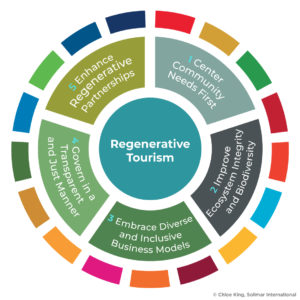
In asking how tourism can be regenerative, we are not arguing that tourism practitioners forgo all attempts at sustainability; efforts that reduce negative impacts, such as transitioning to renewable energy, reducing food waste, or recycling products will be essential in achieving the transition we need. Instead, a regenerative mindset requires simply asking the question: When I travel, or when I receive travelers, what can I do to make sure I have a net positive impact on nature and people in the destination?
Simply sustaining our current system will not be enough to address the scale of all that could be lost if we fail to act quickly. Tourism is capable of doing so much more than just providing economic benefits to a destination, and in fact measuring the other ways it positively contributes to place will be essential in building a more resilient and diversified industry. Regenerative tourism asks us to take a step back and see the bigger picture, and the ways in which the health of communities, nature, business, and visitors intertwine.
The COVID-19 crisis has demonstrated that many facets of the modern economy—interconnected borders, international travel, the office workspace—are not permanent features. With crisis comes an opportunity to reimagine tourism as what it can—and must—become.
If you are interested in reading our upcoming publication with the results from this research, including guidelines and examples of the Five Principles within the Regenerative Tourism Framework for tourism practitioners and destinations, please add your email to an announcement list here. A second blog will also later be published summarizing this report.

